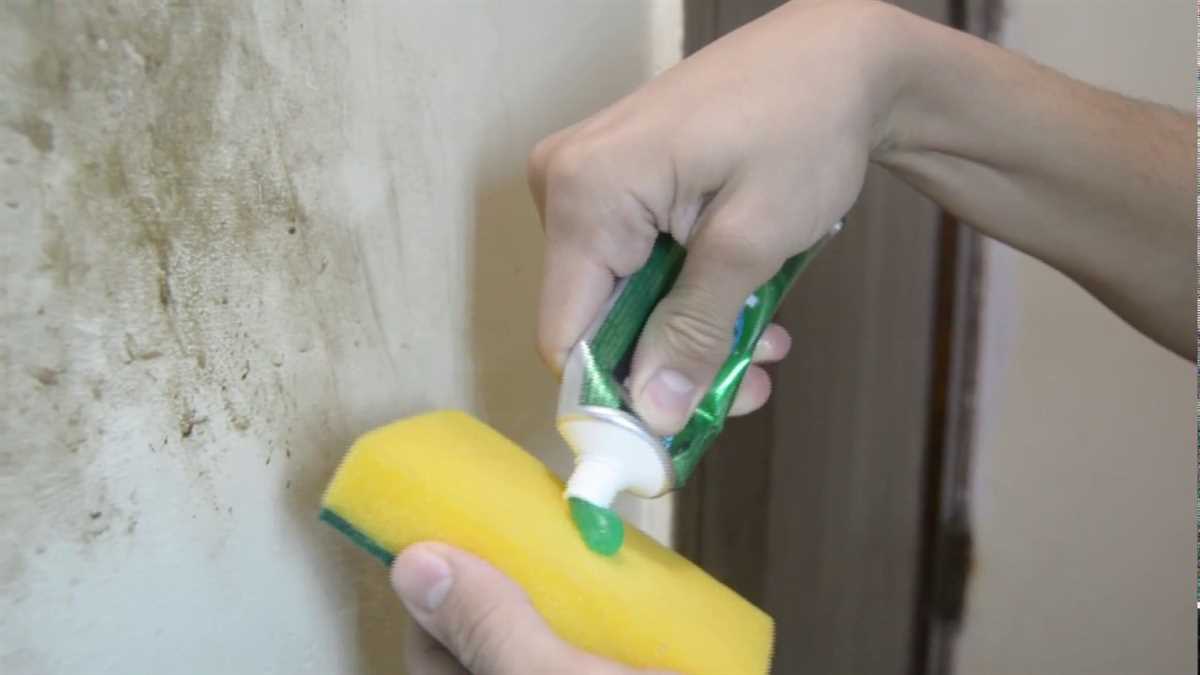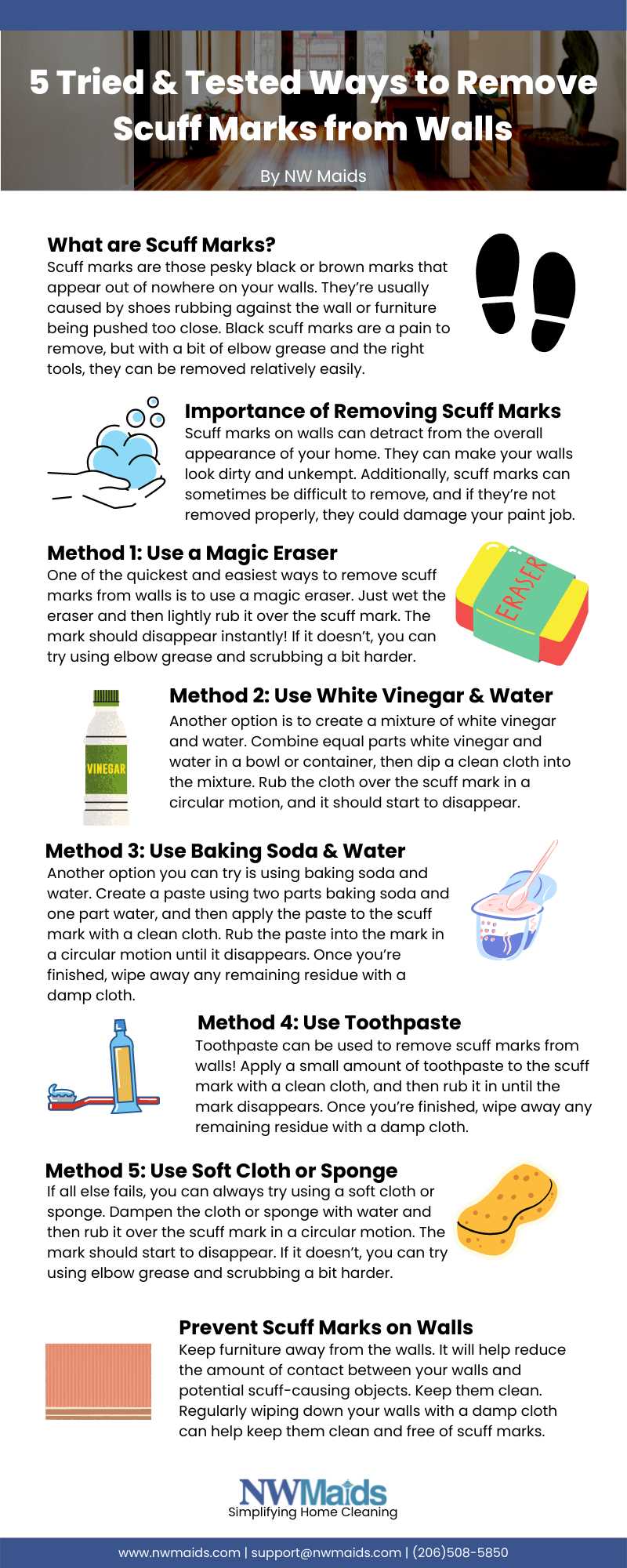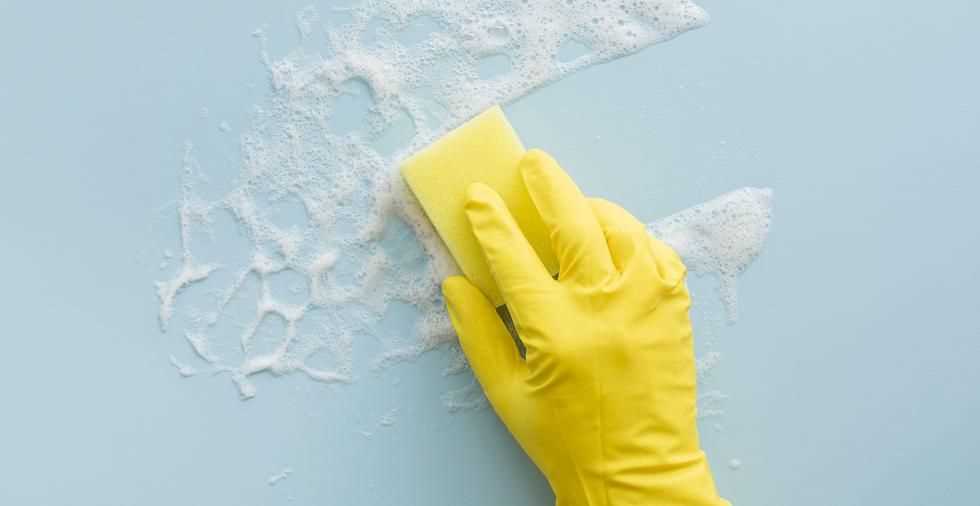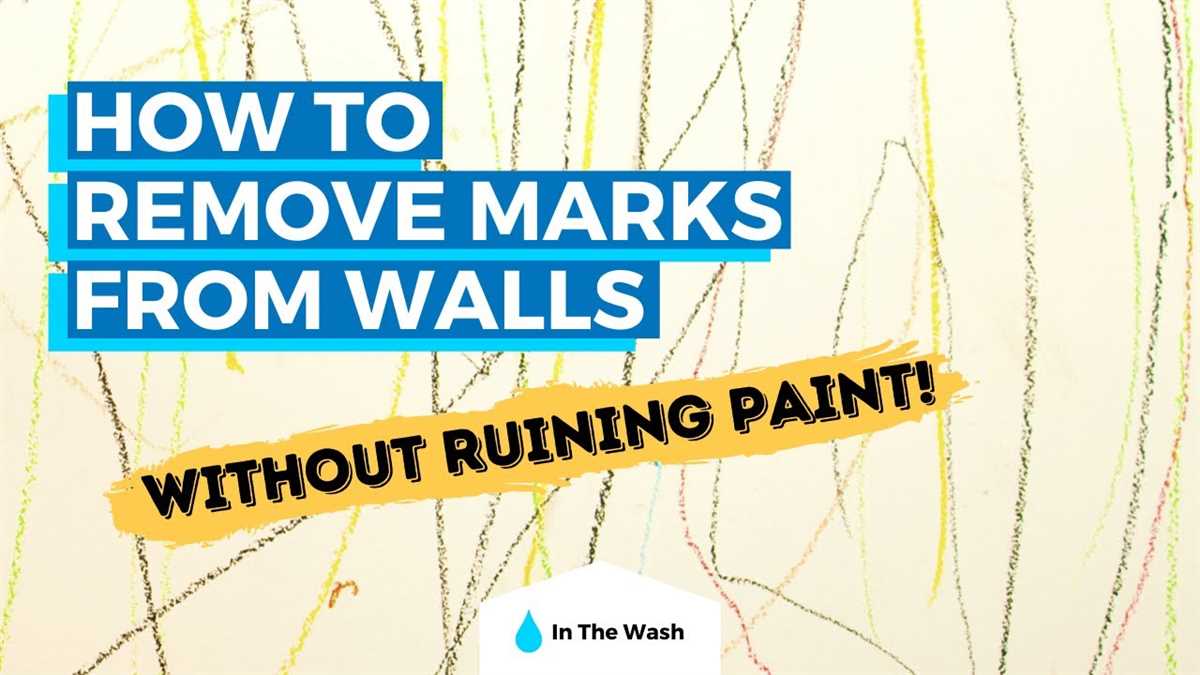




If you’ve ever had to deal with marks or stains on your walls, you know how frustrating it can be. Whether it’s crayon marks left by your little ones or scuffs from moving furniture, nobody wants unsightly marks on their walls. The good news is that there are ways to remove these marks without damaging the paint.
When it comes to removing marks from walls, one of the most important things to remember is to be gentle. Harsh scrubbing or using abrasive materials can not only remove the mark, but also damage the paint. Instead, start by using a soft cloth or sponge and some warm water. Gently dab at the mark, being careful not to rub too hard. In many cases, this simple method will do the trick.
If warm water doesn’t work, you can try using a mild detergent. Mix a small amount of detergent with water and apply it to the mark with a soft cloth or sponge. Again, be sure to be gentle and avoid scrubbing too hard. After applying the detergent, rinse the area with clean water and pat it dry with a clean cloth. This method is effective for removing grease or oil marks.
Expert tip: If you’re dealing with stubborn marks or stains, you can try using a magic eraser. These handy tools are designed to remove marks without damaging the paint. Wet the magic eraser with water and gently scrub the mark in a circular motion. Rinse the area with clean water and pat it dry. However, be cautious when using a magic eraser on matte or flat paint, as it can cause a shiny spot.
It’s important to note that different types of paint finishes may require different cleaning methods. For example, if you have a satin or semi-gloss finish, you may be able to use a mild cleaner or even a vinegar solution to remove marks. However, if you have a matte or flat finish, it’s best to stick to gentle methods like warm water or a magic eraser.
In conclusion, removing marks from walls without damaging the paint is possible with the right techniques. Remember to be gentle, start with simple methods like warm water, and only escalate to stronger solutions if necessary. And always test any cleaning method in an inconspicuous area first to ensure it won’t damage the paint. With a little patience and some expert tips and tricks, your walls can be free of marks and stains in no time.
Preparation and Tools

Before you start removing marks from walls, it’s important to gather the necessary tools and prepare the area properly. Here are the steps you need to follow:
Gather the Necessary Tools
- A clean, soft cloth or sponge
- Mild detergent or dish soap
- White vinegar
- Baking soda
- Cleaning bucket or bowl
- Warm water
- Gentle scrub brush or toothbrush
- Plastic razor blade or credit card
- Paint touch-up kit (optional)
Protect the Surrounding Area
Before you begin cleaning the marks from the walls, it’s essential to protect the surrounding area. This will prevent accidental damage to adjacent surfaces or furniture:
- Move furniture and other items away from the walls.
- Cover the floor with plastic or drop cloths to catch any drips or spills.
- Use painter’s tape to protect baseboards, trim, and other areas that you don’t want to clean or accidentally damage.
Test the Cleaning Solution
Before applying any cleaning solution to the wall, it’s important to perform a patch test to ensure it won’t damage the paint. Choose an inconspicuous area of the wall, such as behind a piece of furniture or in a corner.
- Dampen a clean cloth or sponge with the cleaning solution.
- Gently rub the solution onto the tested area.
- Check for any adverse reactions such as paint discoloration or peeling.
- If there are no negative effects, you can proceed with cleaning the rest of the marks on the wall.
Be Gentle
When removing marks from walls, it’s essential to be gentle to avoid damaging the paint. Use light pressure and avoid scrubbing too hard, as this can remove the paint or cause dull spots.
Additionally, avoid using abrasive materials such as steel wool or scouring pads, as they can scratch the paint surface.
By following these preparation steps and using the right tools, you can safely and effectively remove marks from walls without damaging the paint.
Gentle Cleaning Methods
When it comes to removing marks from walls without damaging the paint, it’s important to use gentle cleaning methods. Here are some expert tips and tricks:
1. Microfiber Cloth
A microfiber cloth is a great tool for gently cleaning marks off walls. Simply dampen the cloth with water and gently rub the mark in a circular motion. Be sure to use light pressure to avoid damaging the paint.
2. Baking Soda Paste


Baking soda is a natural cleaning agent that is gentle on walls. To create a paste, mix baking soda with water until it forms a thick consistency. Apply the paste to the mark and gently scrub with a soft cloth or sponge. This method is effective for removing various types of marks, such as crayon or pen marks.
3. Dish Soap Solution

A simple dish soap solution can also be used to remove marks from walls. Mix a small amount of dish soap with warm water. Dip a sponge or cloth into the solution and gently scrub the mark. Rinse the area with clean water and pat dry with a soft cloth.
4. Eraser
An eraser, such as a pencil eraser or a magic eraser, can be helpful for removing small marks or scuffs. Simply rub the eraser over the mark in a gentle circular motion until it disappears. Be sure to test the eraser on a small inconspicuous area of the wall first to ensure it doesn’t damage the paint.
5. Vinegar Solution
Vinegar is a natural cleaning solution that can be used to remove marks from walls. Mix equal parts vinegar and water in a spray bottle. Spray the solution onto the mark and let it sit for a few minutes. Gently wipe the mark away with a cloth or sponge. Vinegar can have a strong odor, so be sure to open windows or use a fan for ventilation.
6. Toothpaste
Toothpaste can be used as a gentle abrasive to remove marks from walls. Apply a small amount of non-gel toothpaste to a cloth or sponge and rub it over the mark in a circular motion. Rinse the wall with clean water and pat dry with a soft cloth.
Remember to always test any cleaning method on a small inconspicuous area of the wall first to ensure it doesn’t cause any damage. It’s also important to use gentle motions and avoid using harsh chemicals or abrasive materials that can damage the paint.
Removing Stubborn Stains
If you have stubborn stains on your walls that are resistant to typical cleaning methods, there are a few tricks you can try to remove them without damaging the paint.
1. Magic Eraser
A Magic Eraser is a great tool for removing stubborn stains from walls. Wet the sponge with water, squeeze out any excess water, and gently rub the stain in a circular motion. Be cautious not to rub too hard, as this can damage the paint. Rinse the sponge frequently and continue until the stain is removed.
2. Baking Soda Paste
Baking soda is a natural and gentle abrasive that can help lift stubborn stains from walls. Create a paste by mixing equal parts baking soda and water. Apply the paste to the stain, then gently rub the area with a soft cloth or sponge. Rinse the area with water and pat it dry.
3. Vinegar Solution
Vinegar is a versatile cleaning agent that can help remove stubborn stains from walls. Create a solution by mixing equal parts white vinegar and water. Dampen a cloth or sponge with the vinegar solution and gently blot the stain. Avoid scrubbing too vigorously, as this can damage the paint. Rinse the area with water and pat it dry.
4. WD-40
If you have tried other methods without success, WD-40 may be effective in removing stubborn stains from walls. Spray a small amount of WD-40 directly onto the stain and let it sit for a few minutes. Gently rub the area with a soft cloth or sponge, then rinse with water and pat it dry.
5. Professional Cleaning Products
If the stain remains after attempting these DIY methods, you may want to consider using a professional cleaning product specifically designed for removing stubborn stains from walls. Follow the instructions on the product carefully and ensure proper ventilation when using any cleaning chemicals.
Remember to always test any cleaning method in an inconspicuous area before applying it to a larger, more visible area of the wall. This will help you determine if the method is safe for your specific type of paint.
| Method | Description |
|---|---|
| Magic Eraser | Gently rub the stain using a damp Magic Eraser sponge, rinsing frequently. |
| Baking Soda Paste | Create a paste with baking soda and water, apply it to the stain, and gently rub. |
| Vinegar Solution | Dampen a cloth or sponge with a mixture of vinegar and water, blot the stain, and rinse. |
| WD-40 | Spray WD-40 on the stain, let it sit, gently rub, rinse, and dry. |
| Professional Cleaning Products | Consider using a specialized cleaner for stubborn stains, following the instructions carefully. |
By following these tips and tricks, you can effectively remove stubborn stains from your walls without damaging the paint.
Paint-Safe Techniques

- Use gentle cleaning solutions: Avoid using harsh chemicals or abrasive cleaners, as they can damage the paint. Opt for mild cleaning solutions like dish soap and water, or vinegar and water.
- Test on a small area first: Before applying any cleaning solution to a visible part of the wall, test it on a small, inconspicuous area to ensure it doesn’t cause any damage or discoloration.
- Spot clean with a soft cloth: For small marks or stains, dampen a soft cloth with the cleaning solution and gently dab the affected area. Avoid scrubbing vigorously, as it may damage the paint.
- Use a magic eraser: Magic erasers are effective at removing scuffs and marks from walls without damaging the paint. Wet the eraser and gently rub it over the stain, being careful not to apply excessive pressure.
- Try baking soda paste: Make a paste by mixing baking soda with water, and apply it to the stained area. Let it sit for a few minutes, then gently scrub with a soft cloth or sponge.
- Use toothpaste: Toothpaste, especially the non-gel variety, can be used to remove marks from walls. Apply a small amount to a soft cloth and gently rub the stain in a circular motion.
- Incorporate baby wipes: Baby wipes can be useful for removing small scuffs and marks without damaging the paint. Simply rub the affected area with a baby wipe until the mark is gone.
- Consider using a vinegar solution: Mix equal parts white vinegar and water and apply it to the stained area. Let it sit for a few minutes, then gently scrub with a soft cloth or sponge.
- Use a microfiber cloth: Microfiber cloths are gentle on paint and can be used to remove marks and stains. Dampen the cloth with a cleaning solution and gently rub the affected area in a circular motion.
- Protect the paint with tape: If you’re performing any painting or renovation work near the wall, protect the paint by applying painter’s tape or masking tape to the edges. This will prevent accidental marks or damage.
Preventing Future Marks on Walls
1. Use protective coverings
One of the most effective ways to prevent marks on walls is to use protective coverings. Consider adding a chair rail or wainscoting to protect the lower part of your walls, especially in areas prone to marks and scuffs. You can also use peel-and-stick protective films or vinyl wall decals to cover high-traffic areas.
2. Avoid leaning or placing objects on walls
Avoid leaning or placing objects directly on the walls as this can leave marks or damage the paint. Use furniture pads or wall protectors behind furniture to prevent any accidental marking.
3. Hang artwork and mirrors properly

When hanging artwork or mirrors, make sure to use appropriate wall anchors and hooks. This will prevent any accidental falls or movement that could cause damage to the walls.
4. Be cautious with markers and pens
If you have children who love to draw on walls, consider providing them with a designated area for their creativity, such as a chalkboard or a specific wall with washable paint. Keep markers and pens out of reach to prevent any unwanted drawings on the walls.
5. Clean regularly
Regularly cleaning your walls can help prevent the build-up of dirt, grease, and grime, which can lead to marks and stains. Use a mild detergent and a soft cloth or sponge to gently clean the surface. Avoid using abrasive materials or harsh chemicals that could damage the paint.
6. Avoid high-traffic areas
If possible, try to avoid creating high-traffic areas near walls. This can help reduce the chances of accidental marks or scuffs. Redirect foot traffic or place furniture strategically to create clear pathways.
7. Educate and enforce rules
If you live with children or have frequent guests, it’s important to educate them about the importance of taking care of your walls. Enforce rules such as no running indoors or no roughhousing near the walls to prevent any unnecessary damage.
8. Touch up as needed
Keep a small amount of matching paint on hand to touch up any marks or scuffs that may occur. Regularly inspect your walls and address any damage promptly to prevent it from becoming worse.
9. Consider durable paint finishes
When painting your walls, consider using paint finishes that are more resistant to marks and stains. Satin or semi-gloss finishes tend to be easier to clean and are more resistant to scuff marks compared to flat or matte finishes.
10. Use furniture pads and bumpers

Place furniture pads or bumpers on the bottom of furniture legs or any other objects that come into contact with the walls. This will help prevent accidental marks or scratches when moving or rearranging furniture.
FAQ
What is the best way to remove scuff marks from walls?
To remove scuff marks from walls, you can use a Magic Eraser or a mixture of baking soda and water. Gently scrub the scuff marks with the Magic Eraser or the baking soda paste until they disappear.
Will using a Magic Eraser damage the paint on my walls?
Using a Magic Eraser on your walls should not damage the paint if you use it gently. However, it is always a good idea to test it on a small, inconspicuous area first to make sure it doesn’t cause any damage.
Can I use toothpaste to remove marks from walls?
Yes, toothpaste can be an effective option for removing marks from walls. Apply a small amount of toothpaste to a clean cloth and gently rub the mark in a circular motion. Wipe away any residue with a damp cloth.
What are some other household items I can use to remove marks from walls?
There are several household items that can help remove marks from walls. These include vinegar, rubbing alcohol, and hairspray. Just remember to test any substance on a small area first to ensure it doesn’t damage the paint.
How can I remove stubborn marks from walls?
If you’re dealing with stubborn marks on your walls, you can try using a mixture of water and mild dish soap. Apply the mixture to a clean cloth and gently scrub the mark. You can also try using a melamine foam eraser, which is specifically designed to remove tough stains.
Is it possible to remove crayon marks from walls without repainting?
Yes, it is possible to remove crayon marks from walls without repainting. You can try using WD-40 or a pencil eraser to gently rub the crayon marks until they disappear. Afterward, wipe the area clean with a damp cloth to remove any residue.












